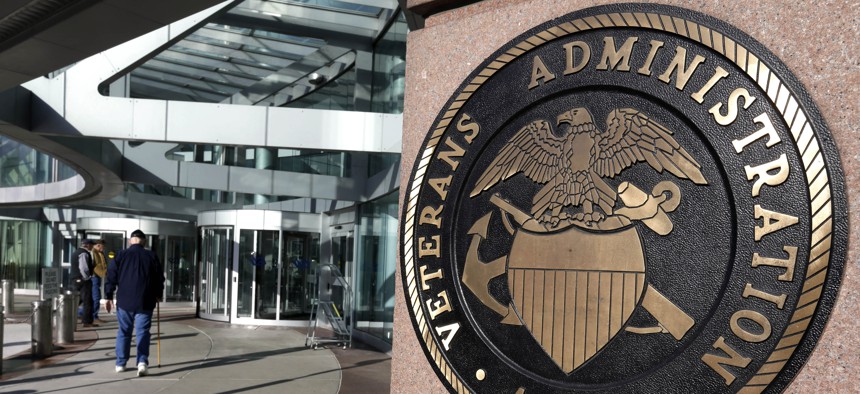
The U.S. Department of Veteran's Affairs Medical Center is shown in Portland, Ore., March 31, 2015. Don Ryan/AP
US Hospitals Could Save Billions If They Took This Lesson from the VA
Most hospitals don’t have good ways of measuring the complex costs associated with an individual patient’s stay in the hospital. The VA is one surprising exception.
The success of health reform in the US depends on finding ways to control the growth of costs. Hospital care is expensive. And when patients have to be readmitted unexpectedly after discharge, it can really crank up spending.
As we strive to keep health care costs in line, reducing hospital readmissions is drawing a lot of attention. Reducing preventable readmissions could reduce health care spending and improve quality of care at the same time.
But very little research on readmission costs has been done. An exception is a study that found that one in five elderly Medicare patients is readmitted to the hospital within 30 days of being discharged, at an estimated cost of $17.4 billion in 2004.
Most hospitals don’t have good ways of measuring the complex costs associated with an individual patient’s stay in the hospital.
But there is, however, a hospital system that does a very good of job of tracking these costs: the Veterans Health Administration.
Veterans Affairs could provide a blueprint
The Veterans Health Administration (the VA) operates 119 acute care hospitals across the US, and has created an unparalleled comprehensive patient-cost accounting system, its Decision Support System (DSS).
The DSS works from the bottom up by summing the individual resources and costs each individual patients winds up needing during their hospital stay. Unlike most other hospital accounting systems, the VA DSS also can separate costs that are fixed regardless of the volume of services provided, such as administrative overhead, from costs that vary with service volume, such as lab tests or imaging. All of this means that the VA can track patients’ costs with greater precision than most hospitals, and can more easily see the cost of readmissions.
There are other reasons why VA is a good setting for studying readmission costs. VA hospitals have a simpler set of incentives around readmitting patients. Under Medicare, hospitals face a trade-off between receiving payments for readmitting Medicare patients and avoiding payment penalties for not readmitting patients under the new ACA regulations.
But in the VA system, budgets are set annually, so there is no financial incentive to readmit patients. It will not increase the amount of money VA hospitals get. And physicians who work in VA hospitals are salaried VA employees. They do not gain financially when they readmit patients, so they have no incentive to provide unnecessary care.
How much money does preventing readmission save?
In a recent study, Theodore Stefos and I used 2011 Decision Support System data to examine the component of cost that varies with a readmission, to provide hospital managers with a more realistic estimate of how much they could save by reducing readmissions.
We found that managers could expect to save $2,140 for the average 30-day readmission prevented. For heart attack, heart failure, and pneumonia patients, expected readmission cost estimates were higher: $3,432, $2,488 and $2,278 respectively.
We also found that patients’ risk of illness was the main driver of expected readmission cost. This is an important finding for managers. Even though this is a factor they cannot control, they can expect that patients with a greater risk of illness might be at greater risk after controlling for other factors such as age. Men also were much more likely to be readmitted than women, as were lower income and unmarried vets. Understanding this information can help hospital managers better predict which patients are at risk for readmission, and to take steps to address this proactively.
(Related: Despite Scandal, the VA Has Actually Fired Very Few for Misconduct)
While the VA has some processes of care that differ from other health care systems, its experience has important lessons for private sector hospitals, especially for those that treat a high share of chronically ill or low-income patients.
Why it is important to know what readmissions cost
Today hospitals are under increasing pressure to curb readmissions. For instance in 2013 Centers for Medicare & Medicaid Services (CMS) started to financially penalize hospitals for 30-day readmissions that exceed national averages for heart attack, heart failure and pneumonia. As of October 2014, chronic obstructive pulmonary disorder and elective knee and hip replacements are also being targeted and the penalty has increased up to 3% of the total Medicare reimbursement to the hospital.
Hospital managers would like to know what actual cost savings are when a readmission is avoided, so they can understand how readmissions affect their overall budgets.
This post originally appeared at The Conversation. Follow@US_conversation on Twitter.



